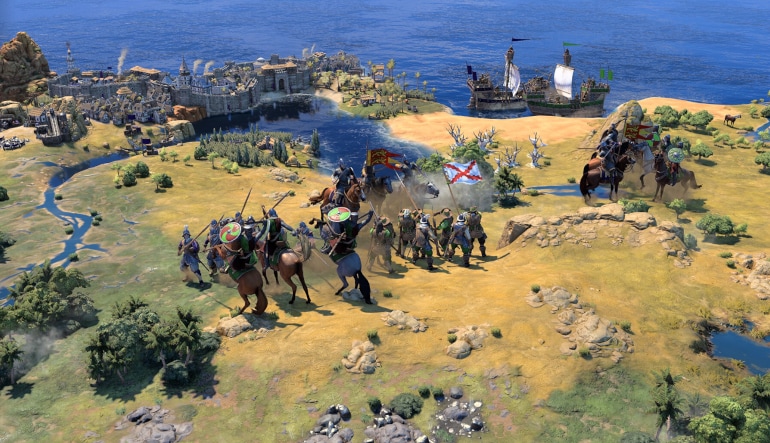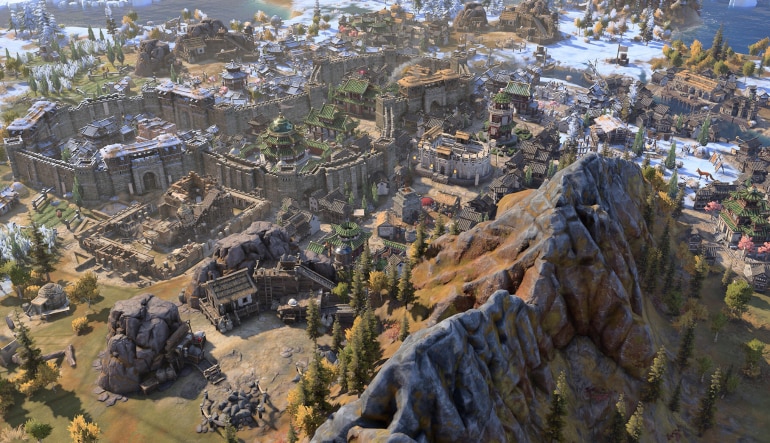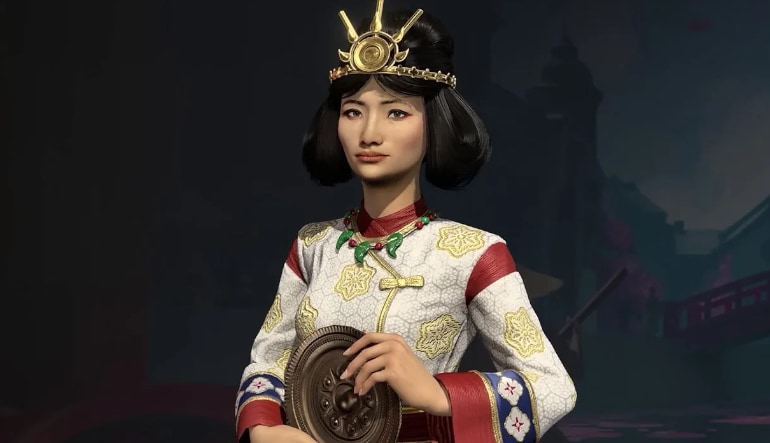Nine years after Civilization VI was released, Firaxis is returning with Civilization VII, the next entry in the series.
Ed Beach, the lead designer of Civilization 7, said that the philosophy behind each new instalment is to keep 33% of the game’s contents unchanged, 33% improved, and 33% – brand new [1]. This allows the new parts to stay familiar while also being a fresh experience for the series’ veterans.
Please note that Civ 7 has not yet been released at the time of writing.
- Graphics and Art Style: How Civ 7 Evolves Visually
- Gameplay Mechanics: What’s New for Civ Veterans
- City-Building and District Systems: Refined or Overcomplicated?
- Civilisations and Leaders: Returning Favorites and New Faces
- Expansions and DLC: What Might Civ 7 Offer?
- Endgame Challenges: Has Civ 7 Fixed Late-Game Stagnation?
- Which Game Is the Ultimate Civilization Experience?
Graphics and Art Style: How Civ 7 Evolves Visually
Civilisation VI received some criticism for its cartoonish art style, a departure from the relatively realistic look of the earlier instalments.
In response to the backlash, the newest part’s art direction returned to the more detailed and realistic style of the earlier games, although it also retained the vibrant colours of its direct predecessor.
Firaxis made sure that the upgraded visuals make Civilization 7 look modern and polished, as befits a game released in 2025. The units and leaders also come with updated, more detailed animations, and the maps and cities look more alive than ever.
Gameplay Mechanics: What’s New for Civ Veterans
As with all previous instalments, Firaxis ensured that Civilization VII’s gameplay is familiar but different enough to warrant a new part of the series.
The biggest change is the introduction of a new Ages system, which replaces the eras known from the past games. This is more than just a name change – the dawning of a new Age brings many more changes than a jump between eras. Moreover, all civilisations on the map undergo age transitions simultaneously, as enough progress is collected.
Ed Beach, the lead designer of Civ VII, argues that in real life, history is layered [2]. Take London, for example. Throughout the ages, it was governed by the Romans, Normans, and Anglo-Saxons, to eventually become the capital of the British Empire.
Similarly, in Civilization VII, civilisations are Age-exclusive, and you choose a new one when you enter a new Age. You can play as Rome in antiquity, but it won’t stay Rome all the way into modernity, just as the Roman Empire didn’t make it to this day in real life.
As such, your antiquity-era Egypt could evolve into the Abbasid Caliphate in the exploration age. But your decisions can also open up the possibility of it becoming Mongolia.
You won’t be able to choose your civilisation’s future incarnation at random. The civs you can evolve into depend on several factors:
- You can evolve into a historically and geographically accurate civ. For example, Han China can become Ming China and then Qing China.
- Your choice of a leader can unlock potential new routes. If you select Napoleon, you can evolve into the French Empire, no matter which civilisation you start from.
- Your gameplay choices during the previous Age, as well as during the Age transition period, can open up more paths.
City-Building and District Systems: Refined or Overcomplicated?
Civilization VII introduces the division between cities and towns. Your first settlement becomes the capital city of your civilisation, and each new one starts as a town. A town requires much less management while still providing economic benefits – but, notably, it does not have a production menu.
When a town reaches a certain population, you choose one of several specialisations for it, for example, farming, fishing, mining, religion, trade, and more.
As the game progresses, you can evolve your towns into full-fledged cities – but you don’t have to. If you dread the late-game amount of micromanagement across many cities, you can use towns as a way to streamline your experience. But if you’re more of a min-maxing type, you can opt for cities instead and gain more control over your settlements and their output.
Civilization VII overhauled the district system from the previous instalment to make it less complex and more flexible. Now, you don’t have to assign a district specialisation as you build it. Instead, each urban tile has two building slots that can hold two buildings – and by choosing those buildings, you customise your district. Notably, the districts have to be adjacent to a city centre tile and expand from there, creating a more uniform look for your city.
Civilisations and Leaders: Returning Favorites and New Faces
While you get to choose a new civilisation at the start of a new era, your leader stays the same for the entire playthrough.
However, leaders are no longer tied to a civilisation. You could install Confucius as the leader of Ancient Egypt.
You’ll notice that not all leaders in Civilization VII are kings, queens and other historic rulers. While you’ll see some familiar faces from the previous instalments, like Catherine the Great, other leaders include philosophers, scientists, and civil rights fighters. Choices include Machiavelli, Ada Lovelace, Harriet Tubman, and more.
Expansions and DLC: What Might Civ 7 Offer?
At this moment, we know of two upcoming content packs that will be available post-launch: The Right to Rule Collection and The Crossroads of the World Collection. Each of them will include 2 new Leaders, 4 new Civilisations, 4 new Wonders, and some cosmetic bonuses.
Preordering the game or getting the Deluxe or Founders edition also gives you access to new Leader Personas. This means you can choose between different variants of an existing Leader, which come with different perks.
More DLCs are planned, but the details are not available yet. It’s safe to assume that each of them will give us new civs and leaders to choose from.
Endgame Challenges: Has Civ 7 Fixed Late-Game Stagnation?
Late-game in 4X games can become something of a slog. With multiple cities across the map, you face an immense number of repetitive actions and decisions to make that often mean players abandon the playthrough to start a fresh one.
We have already mentioned the differences in city management, which includes less time-consuming towns.
Another – somewhat controversial – change meant to streamline the experience is the removal of the builder unit. Now, instead of moving a unit to build improvement (and having your military escort it safely), you receive Population Points as the population of your settlement grows. Those can be assigned to a tile for improvement.
Which Game Is the Ultimate Civilization Experience?
That is a topic for a whole new article – one that could not give you a conclusive answer, seeing how even without Civ 7, the fans of the series can’t agree on one ultimate Civilization game.
Will Civilization VII become a beloved part of the series like Civilization V, or will it share the fate of Civilization VI sales- and popularity-wise?
Certainly, the list of changes sounds interesting and could provide a whole new, streamlined experience – but on the other hand, some worry it will be too streamlined, providing little challenge to the micromanagement, min-maxing fans.
There are also some worrying reports from the players who were able to play the game before the release, that the game is not quite as polished as one might expect – although knowing Firaxis, this will be ironed out in the upcoming updates.
There is only one way to know for sure – give the new Civilization VII a try and compare it to your favourite instalment yourself!








